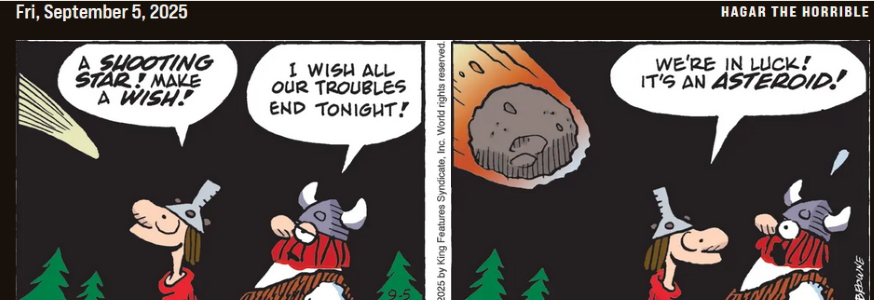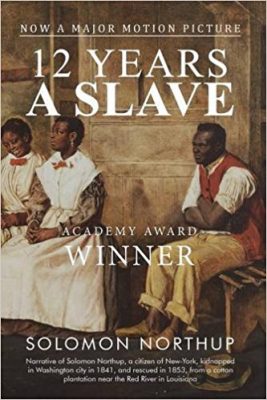
Solomon Northup, born 1808, died around 1863, was a slave for 12 years from 1841 to 1853. What about the rest of his life? What about his life as a free person for the first 32/3 years of his life? What about his life for the last ten or so years of life?
In the movie version of his story, there are brief snippets at the beginning and end of his life in freedom. He is shown with his family in his home in his community but only fleetingly. Still there is enough there to pique one’s interest. All of his life in New York was as a free person. He established a family and earned a living as a free person. That story isn’t told wasn’t told in the movie.
Northup’s life marks the beginning of a new era in New York State history for middle passage blacks. By 1827, some were already free; after 1827 almost all of them were. Now they were living as free people not just in the city of New York but throughout the state. What’s their story?
AFRICAN AMERICAN CEMETERY
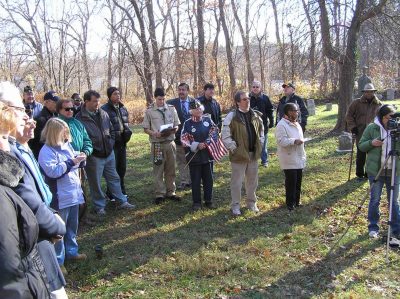
In the Town of Rye where I live, the town owns what is now called the African American Cemetery. It is located in the City of Rye which formerly had been part of the town. It is located adjacent to the formerly white-only Greenwood Cemetery in Harrison near Halstead Road on land donated by Underhill and Elizabeth Halstead in 1860. The land contains 379 burials including for veterans from the Civil War, the Spanish American War, and World War II according to the list distributed at the Veterans Day ceremony on November 4, 2017. The town website also mentions World War I. The cemetery closed in 1964 was effectively abandoned afterwards. It became home to immensely high and thick weeds. Eventually, Dave Thomas, a Town of Rye employee, led the effort to restore it. In the last decade there have been annual ceremonies there, a kiosk has been installed, and Eagle Scouts have earned merit badges for their work there. It is a part of local history that still is known only by a few including descendants of people buried there.
THE HILLS
Speaking of Harrison, next door, in that community there was a place called The Hills. According to the town website:
The Hills refers to the area of Harrison, North Castle and White Plains where the largest concentration of African-Americans in Westchester County lived through 1870. Many of the early settlers were former enslaved people who had been voluntarily emancipated by religious orders such as the Quakers and the Methodist-Episcopalians beginning in the early 1770’s. The Hills was a cohesive community with strong family relationships, its own church, school and cemetery. Thirty-six Hills residents fought in the Civil War, contributing to the effort to end slavery and preserve the Union.
This collection is a representation of the history of the Hills community beginning in 1790 through 1925. The documents include census data, area maps, original school records, a church mortgage, land deeds, letters of a civil war soldier, veterans pension claims, and newspaper articles about Hills residents. They reflect the development, stability, and economic viability of the community.
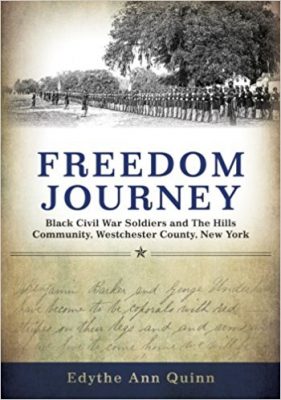
In this instance, the person spearheading the effort to document and tell the story of Hills was the local town historian, Edythe A. Quinn, now a history professor at Hartwick College in Oneonta. She is the author of “The Hills” in the Mid-Nineteenth Century: The History of a Rural Afro-American Community in Westchester County, New York (1988) and Freedom Journey: Black Civil War Soldiers and The Hills Community, Westchester County, New York (2015). At my invitation, Edythe spoke to the Westchester social studies teachers at an annual conference. Still my impression is that this piece of local lore is not fully integrated into the school curriculum.
SENECA VILLAGE
A better known community of free blacks in the 19th century is Seneca Village. It had the misfortune to be located in what would become Central Park and the good fortune to be located almost directly across the street from the current location of the New-York Historical Society. Information about this integrated community can be found at the website of the Conservancy of Central Park. An archaeological dig of the site in 2011 uncovered stone foundation walls as well as individual artifacts, including what appeared to be an iron tea kettle, a roasting pan, a stoneware beer bottle, fragments of Chinese export porcelain, and a small shoe. Leading the effort have been Diana DiZegra Wall then of the CUNY Department of Anthropology, Nan A. Rothschild, Department of Anthropology, Barnard College, and Cynthia Copeland then of the New-York Historical Society. In reading an article they wrote, I noticed in the bibliography some readings which further shed light on this period in history that may be of interest:
Rhoda Golden Freeman, The Free Negro in New York City in the Era before the Civil War (1994)
Leslie M. Harris, In the Shadow of Slavery: African Americans in New York City, 1626-183 (2003).
Recently on New York History Blog there was a notice for a new book, Black Gotham: A Family History of African Americans in Nineteenth-Century New York City by Carla Peterson. It is described as part detective tale, part social and cultural narrative of the author’s quest to reconstruct the lives of her nineteenth-century ancestors. As she shares their stories and those of their friends, neighbors, and business associates, she illuminates the greater history of African-American elites in New York City.
WEEKSVILLE
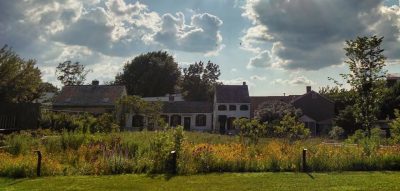
One final location in the city to be mentioned before returning north to Northup is Weeksville in Brooklyn. According to the Weeksville Heritage Center
Weeksville, part of the present-day neighborhoods of Crown Heights and Bedford-Stuyvesant, was an independent free black community, named for James Weeks. Weeks purchased property in 1838, along with other African American investors, in order to create an intentional landowning community. Continuing the legacy of self-determination, Weeksville’s history was rediscovered in 1968 when urbanization threatened to erase the physical memory by destroying the few remaining historic homes. Instead, a grassroots preservation effort was led by James Hurley, Dewey Harley, Dolores McCullough, and Patricia Johnson, and eventually artist and activist, Joan Maynard to preserve the Hunterfly Road Houses and the memory of historic Weeksville.
Everyplace has a Weeksville, where ordinary people came first and labored to create a more hospitable living setting for their loved ones. The rediscovery and preservation of this local history provides a means of reestablishing a continuity with the past so that children, armed with the knowledge of the contributions of their forebears can gain strength to meet the challenge of the future.
Needless to say the last line is a critical one on why local history is important. Unfortunately the use of “forebears” could be interpreted to mean Weeksville is only for black people. As was shown in the Hunts Point Slave Burial Ground in the previous post, Undoing the Whitewashing of Black History in New York, the nearby elementary school includes students of multiple races and it is unlikely that the slave burials were of any of their forebears. Furthermore with the Great Migration, it is more likely that the forebears of black people in the Brooklyn community now were in the south then rather than in 19th-century Brooklyn. The theme should focus on the “ordinary people” of the earlier line, their dreams, their hopes, their achievements all of which should resonate with people of all backgrounds today.
Weeksville has a tough road to hoe given its location in a commercialized section of Brooklyn. Truth be told, when the Weeksville Heritage Center staff attend history museum conferences, generally in upstate New York, they tend to stand out from other attendees. This reality was made clear by a former director of the site at a memorable closing session of a MANY conference. This condition is part of a larger issue on the place of history and its stewards at the local, state, and national level.
THE MYERS HOUSE
Turning north, the Capital Region also has a site with a story to tell about free blacks in the 19th century. When Paul and Mary Liz Stewart began investigating the Myers House, it was in connection with the Underground Railroad. Over the years they have carved out a place for themselves on this topic in New York through the creation of the Underground Railroad History Project. It holds an annual conference with the next one March 9-11 in conjunction with the annual New York State Social Studies Conference also In Albany this year.
Somewhere along the line they realized that there was more to the Myers residence than the Underground Railroad. Just as Solomon Northup had a life as a free black before and after his captivity, so the Myers had a life that extended beyond the Underground Railroad. Like Northup, they were free blacks with a family and a home who earned a living as free people. The research then shifted from solely focusing on the Underground Railroad to investigating the jobs, professions, and lives of the free blacks who were a community in Albany. So besides restoring the home (and the first time I was there with the teachers it definitely needed a lot of work!), the research has branched out to include an archaeology dig with the SUNY Albany Field School and developing a picture of the fully active 19th century free black community.

ADIRONDACKS
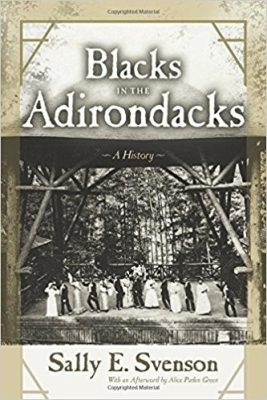
Even further upstate, an active person in telling the story of free blacks has been Sally E. Svenson. She is the author of Blacks in the Adirondacks: A History (2017). She also has an article on “Brookside: An Integrated Cemetery in the Adirondacks” in the current issue of New York Archives. The cemetery is closely connected with Gerrit Smith who donated land to free black farmers to settle in the Adirondacks. Smith figures prominently in the events at the National Abolition Hall of Fame and Museum in Peterboro. Dot Willsey sends me notices of all the events which is only fair since I send her my posts.
Finally to close the circle, let’s return to Solomon Northup. Last fall, SUNY Adirondack’s Continuing Education division offered a class on him. The class was taught by David Fiske, the co-author of the book, Solomon Northup: The Complete Story of the Author of Twelve Years a Slave, and the author of Solomon Northup’s Kindred: The Kidnapping of Free Citizens before the Civil War. Presumably there is more being taught then just the 12 years of his captivity.
So what we can learn from this admittedly partial overview of mostly 19th century life of free blacks in New York?
1. They weren’t slaves. They were free people who had families, owned homes, had farms, and had money-earning skills in a variety of jobs and professions. In other words there was more to their lives in the New York than being part of the Underground Railroad. The minimizing of their lives as slaves in the New York State history is matched by a minimizing of their lives as free people after 1827 by restricting it to the Underground Railroad.
Consider the movie Brooklyn (2015), the story of an Irish immigrant to America in the 1950s who lives the American Dream. She was not a superhero. She did not change the course of human history. She did not stand out as she was one of many who eventually found their heaven on earth after an intermarriage to an Italian and a dedication to education. Solomon Northup was doing that over a century earlier but that story is only glimpsed at the beginning and end of the movie.
2. There is more to black lives than being rescued by the white savior. Yes, it’s great that the godly Brad Pitt helped free Northup from captivity but notice that limited life being assigned to black people – they are victims. We all are aware of how important victim ideology is in the political arena today. Elitists love to tell the story of a Joe Louis or Jackie Robinson but what about the black Saoirse Ronan who stars in Brooklyn. Free blacks had a life in New York beyond the Underground Railroad with stories to tell just as Irish, German, Italian, Jewish, and immigrants from countries besides Norway have to tell. But those stories aren’t told.
3. Preserving the physical heritage of that history is a challenge. Besides the abandoned cemeteries and rundown houses I mentioned in this post, there are problems with the preservation of these cemeteries beyond New York State as well (see “Perpetual Neglect: The Preservation Crisis of African-American Cemeteries”).
If we had a New York State history conference, the story of free blacks would warrant an annual session. How many such communities were there throughout the state in the 19th century? What happened to them? What physical remains are there of these communities? Where are the artifacts stored? What is included in the k-12 curriculum? Since there are problems maintaining the local history of white people, the challenge is even greater with black people, people who have been here as long as the Dutch, the Huguenot, the Palatines, and the English.
As I continue to move through the time line exploring this history in New York, we will see that decisions have been made by middle passage blacks about how they view themselves within America as free people seeking to live the American Dream, as victims, and as a people now at a crossroads.




